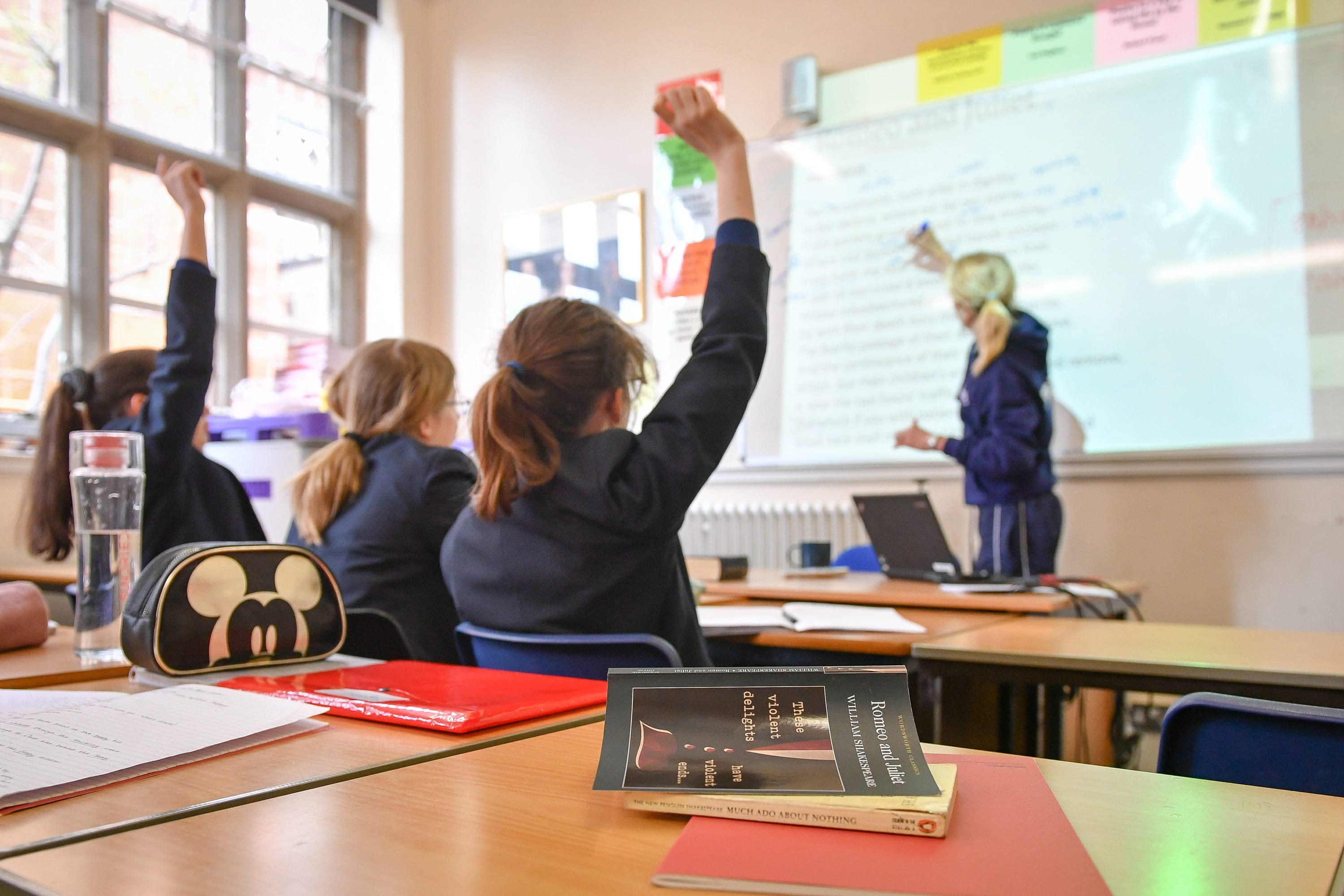No growth in school spending over 14 years is ‘historically unusual’ – IFS
State schools in England have seen a ‘squeeze on funding’ since 2010 and secondaries were hit hardest, researchers said.

No real-terms growth in school spending per pupil over 14 years in England is “historically unusual”, a report said.
School spending per pupil tended to be at a record level each year prior to 2010, but this was not the case between 2010 and 2023, according to the Institute for Fiscal Studies (IFS).
The report on school spending in England – which has been published ahead of the General Election next month – said schools have seen a “squeeze on funding” since 2010 and secondary schools were hit hardest.
The analysis said: “It is true that school spending per pupil will be at an equal historic high in 2024–25. But this still represents a significant break with the long-run trend.
“Prior to 2010, school spending per pupil was usually at a record level every year.
An incoming government might thus be tempted to cut school spending in response to falling pupil numbers
“The fact that school spending per pupil was not at a record high between 2010 and 2023 is a reflection of the fact that we have just seen a historically unusual real-terms cut in spending per pupil.”
Between 1979 and 1997, when the Conservatives were in power, real-terms spending per pupil rose by about 1.4% per year in primary schools and 1% per year in secondary schools, the researchers estimated.
School spending per pupil then rose by about 5% to 6% per year in real terms under the 1997–2010 Labour government, the report said.
Under the Conservative government between 2010 and 2019, total school spending in England rose by 1% in real terms. But as pupil numbers grew by 11%, school spending per pupil fell by 9%.
The report said: “No real-terms growth in school spending per pupil over 14 years is historically unusual.”
Researchers said teacher pay levels have “declined significantly” in real terms in recent years and have contributed to teacher recruitment and retention challenges.
The report also highlighted that “one of the biggest recent pressures” on the schools budget has been the rising numbers and costs of educating pupils with special educational needs and disabilities (Send).
But researchers said the “falling pupil population creates potential opportunities for savings” in total school spending after the election.
It’s shameful that there has been no growth in funding per pupil over 14 years, while at the same time schools have been battling a rapid increase in responsibilities and costs and teachers have faced real terms pay cuts because of government austerity policies
The report said: “If spending per pupil is frozen in real terms, total spending could be cut by about £3.5 billion.
“If spending per pupil grew in line with likely school costs, then savings would be about £1.7 billion.”
But the researchers warned that delivering such savings would likely require cuts to staffing and potential school closures, which they said are “hard to achieve in practice without disrupting children’s education”.
Luke Sibieta, research fellow at the IFS and author of the report, said: “Looking to the coming parliament, policymakers are caught between a rock and a hard place. On current plans, many other areas of public service spending appear to be facing cuts under either a Conservative or a Labour government.
“An incoming government might thus be tempted to cut school spending in response to falling pupil numbers.
“Realising such savings could be easier said than done as it would likely require workforce reductions and, perhaps, school closures.
“This is probably why policymakers have shied away from making cuts to total school spending in the past.
“There is also a growing list of pressures on school spending, which may become harder to address over time, such as the spiralling cost of special educational needs provision, real-terms cuts to teacher pay and a growing backlog of repairs to school buildings.”
Pepe Di’Iasio, general secretary of the Association of School and College Leaders (ASCL), said: “It’s shameful that there has been no growth in funding per pupil over 14 years, while at the same time schools have been battling a rapid increase in responsibilities and costs and teachers have faced real terms pay cuts because of government austerity policies.
“The next government must take the opportunity of a projected fall in pupil numbers to invest properly in schools and colleges, rather than clawing back savings into the Treasury and making the situation worse.”
Paul Whiteman, general secretary at school leaders’ union NAHT, said: “This research shows in the starkest possible terms how schools have been sidelined for years when it comes to national priorities.”
He added: “It would be hugely short-sighted for any incoming government to use falling pupil numbers as a reason to further cut spending, and instead we urge all political parties to restore education as a national priority.”
Bookmark popover
Removed from bookmarks